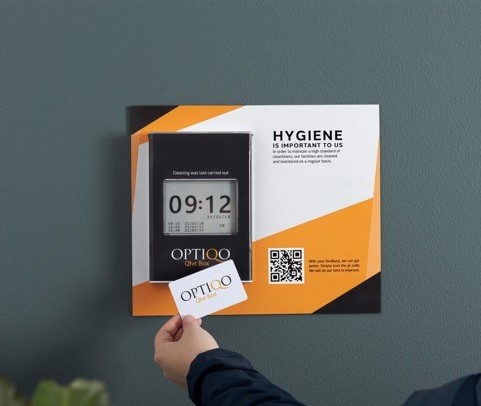info@puhastusekspert.ee +372 5611 1048
Digitalization of Cleaning
 On February 8-9, 2024, Swedish cleaning specialists Martin Älenmark and Marcus Lindström from Optiqo Sweden AB visited Estonia. The experts’ invitation was supported by the Erasmus+ consortium’s mobility project, and the training was free for participants. Mobility Project No. 2023-1-EE01-KA121-VET-000133792.
On February 8-9, 2024, Swedish cleaning specialists Martin Älenmark and Marcus Lindström from Optiqo Sweden AB visited Estonia. The experts’ invitation was supported by the Erasmus+ consortium’s mobility project, and the training was free for participants. Mobility Project No. 2023-1-EE01-KA121-VET-000133792.

The experts shared their experiences on how digitally collected data helps make cleaning needs-based and thereby save resources. Their shared international experiences were inspiring.
For example, the experience of a Norwegian shopping center was highlighted, where the client was not satisfied with the cleaning service. Both the service buyer and provider were dissatisfied, and solutions were sought to make the cooperation work. Digital data collectors were installed in the shopping center’s 6 restrooms, which recorded the usage of the restrooms. Cleaning staff recorded their working hours on the same device, with the last three cleaning times visible to customers. Additionally, customers had the opportunity to provide feedback on the service quality using a QR code.
Analyzing the data collected over 1 month revealed the following:
- The number of customers who visited the restrooms between two cleaning cycles was significantly higher than usual in other similar premises, meaning cleaning occurred too infrequently.
- Based on customer feedback, the biggest problem was the lack of toilet paper in the restrooms. Analyzing more detailed data revealed that over 70 people used the restrooms without paper, who were likely dissatisfied with the situation.
- Analyzing the situation with the client and service provider, the client was willing to purchase additional cleaning cycles. The data showed that even if the same cleaning cycles were maintained but the cleaning times were changed, significantly better customer satisfaction could be achieved.
- Cleaning should be needs-based. There were significant differences in restroom visitation – from 450 to 223 customers per day. The numbers showed an opportunity to make the activity more needs-based, as cleaning had previously been planned uniformly across all areas.
The solution to the situation was simple and could be implemented quickly. Without real data, it would have been difficult for both the cleaning company and the client to make informed decisions. Furthermore, without real information, there are significantly more ’emotional discussions’.
The experts also highlighted the experience of a New Zealand airport, where hundreds of digital data collectors help make cleaning more efficient. As a result:
- There are no cleaning guidelines, as daily tasks are formed according to need – various sensors and information collection systems provide input, based on which an electronic needs-based list is generated for the cleaning staff to clean. The cleaning staff records their working hours, completed tasks, and encountered problems. Development work is continuously carried out by analyzing the data.
- The visitation of key areas is electronically monitored, customer feedback is collected via QR codes, and the fill levels of waste bins and the emptying of dispensers equipped with sensors are monitored.
- Cleaning is needs-based, meaning it occurs where it is needed, and dirt is removed that needs to be removed at that specific time and location.
The implementation of the New Zealand system took approximately 6 months. Once data collection, monitoring, and analysis were established, airport cleaning was organized with 25-30% lower costs and with better results.